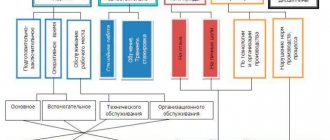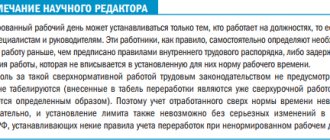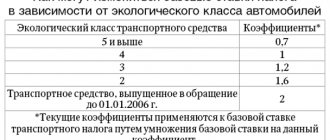01.08.2019
0
3741
6 min.
Working time is the period during which a citizen is engaged in performing his duties. They are provided for in the employment contract, the individual provisions of which are devoted to internal regulations. Regardless of private or state ownership, enterprises are guaranteed freedom in terms of the terms of the agreement with employees and the organization of the daily routine. However, the rules must take into account working hours under the Labor Code. It is established by several articles and the duration cannot be longer. Actual discrepancies between legislative norms and the situation at the enterprise, when an employee’s rights to normal work and rest are violated, are grounds for appealing to supervisory authorities and the court. Management is obliged to immediately eliminate imbalances, bringing them to the standard established by law.
Article 91. Concept of working time. Normal working hours
Working time is the time during which an employee, in accordance with internal labor regulations and the terms of the employment contract, must perform labor duties, as well as other periods of time that, in accordance with this Code, other federal laws and other regulatory legal acts of the Russian Federation, relate to working hours.
(as amended by Federal Law No. 90-FZ of June 30, 2006)
Normal working hours cannot exceed 40 hours per week.
The procedure for calculating the norm of working time for certain calendar periods (month, quarter, year), depending on the established duration of working time per week, is determined by the federal executive body exercising the functions of developing state policy and legal regulation in the field of labor.
(Part three introduced by Federal Law dated July 22, 2008 N 157-FZ)
The employer is required to keep records of the time actually worked by each employee.
Planning, organizing and controlling the work process
If the management of an organization wants to increase the efficiency of the production process, it must competently plan and organize the working time of each employee.
Planning your working time allows you to do the following:
- increase the level of operational efficiency:
- optimize your work schedule;
- improve time use techniques;
- weed out ineffective activities;
- Clearly separate work and personal time.
Time planning is divided into types according to various criteria:
- by scope (general and specific);
- by content (strategic, operational and current);
- by objects (personnel, production, financial);
- by periods (short-term, medium-term, long-term);
- if possible, changes (rigid and flexible).
Work process planning is always reflected on paper. In recent years, electronic planning has become popular.
Any plan must be recorded in writing
Features of working time planning:
- No matter how perfect a plan is, adjustments are always made to it.
- All actions recorded in the plan are divided by time into short-, medium- and long-term.
- The plan must be realistic, that is, you should not plan difficult things to accomplish.
- It is necessary to record not only goals, but also expected results.
- The plan must reflect the deadlines for completing the assigned tasks.
- It is necessary to appoint responsible persons for certain actions, i.e. delegate authority.
In my opinion, any work requires proper planning. A formalized plan helps distribute the amount of work during the working day and determine primary goals and objectives. Based on personal experience, I can note that the most important things are best done in the morning, when performance is at its maximum. It is especially important for freelancers to have a written or electronic plan on hand, since careful planning is what helps you be disciplined.
For example, the working day of an advertising agent will include several blocks: cold calls, preparation of commercial proposals, negotiations, travel to conclude an agreement. If you can set aside a certain time during the working day for calls, then other activities require flexible planning. Therefore, it is difficult to control them.
Organization of the working time of any employee includes:
- Preparation of a work schedule.
- Selecting working hours for subordinates.
These points are recorded in the internal labor regulations, in employment contracts and additional agreements to them, in shift and vacation schedules.
Any organization must create a work schedule for each employee.
Related to the concept of regime is the issue of accounting. To do this, a time sheet is kept, where information is entered about employees going to work, reasons for absence and the number of hours worked. This document is mandatory, and in addition to it, the company can use other forms of accounting.
To record the actual time worked, a special time sheet is used, which records all attendances and absences for work of each employee, the number of hours spent on performing duties
Control allows you not only to record the time of arrival and departure of employees, but also to evaluate the efficiency of using working time. It is necessary to maintain labor discipline and to fairly remunerate subordinates. Various means are used for control:
- Logbook.
- Regular employee reports.
- Computer technologies (special applications that track time and monitor telephone calls, etc.).
- SLUD. Access control and management systems make it possible not only to provide employees with the ability to access certain premises and objects, but also to establish how long the employee remained within the organization’s territory.
- CCTV.
- A program for tracking employees' working hours at work computers.
How to calculate working time fund
The working time fund must be taken into account by the management of the organization. If you don't do this, it will be difficult to determine how many employees will be needed to complete the job and how long it will take. The fund is used to balance working hours.
The working time fund is the planned time allocated for the work of each employee.
When planning the working time fund, actual information is taken as a basis, which is compared with predicted indicators, and downtime in the labor process is also taken into account.
The working time fund includes the following indicators:
- Calendar fund (represents the total period for which the fund is determined).
- Nominal fund (this is the number of days in a year remaining after deducting all weekends and holidays).
- Maximum probable fund (the maximum number of days per year during which the employee performs his functions).
- Attendance fund (involves accounting for actual time worked).
The basis of this fund is the calendar period during which calculations are made. These may be the following periods:
- Year (relevant if you need to conduct a full-fledged study of employee productivity).
- Quarter (needed for cumulative time tracking).
- Month (the indicator is used when calculating salaries, determining the ratio of actual workdays to the production rate).
When calculating the nominal fund, you must use the following formula: calendar fund - holidays - weekends.
The maximum probable fund is calculated as follows: nominal fund - vacation (28 days). The result obtained using this formula will be considered the general production standard. This indicator is important for determining the optimal number of workers in an organization.
To calculate the turnout fund, the following formula is used: the maximum probable fund is the number of days missed. In this case, all working days missed for objective reasons will be taken into account, namely:
- maternity and child care leave;
- sick leave;
- leave due to training;
- time off by agreement with the employer;
- additional paid leave.
Management should make a comparison between the actual work hours of workers and production needs. The resulting ratios allow us to determine how many workers need to be involved in the work process.
How to balance working hours
To increase labor productivity in an organization, it is necessary to identify existing reserves. For this purpose, a balance is drawn up for the use of working time.
The balance includes two sections:
- working time resources (working time fund and absence from work due to holidays or vacations);
- use of working time (this includes indicators that allow us to characterize the structure of the fund).
Working time balance is a table that reflects the distribution of calendar days and hours and their use by the organization’s employees. The calculation of the indicator is carried out for one employee or for a group of workers. In the latter case, workers should share similar working conditions and the same length of vacation.
Working time balance is calculated as a comparison of plan and actual indicators
Stages of drawing up a balance sheet:
- The predicted indicator is calculated according to the calendar, taking into account standard labor time, as well as data on vacations and other absences.
- The periods of downtime expected by the employer and the possible incapacity of the employee are taken into account.
- The average indicator is determined, i.e. the duration of the shift is multiplied by the standard days of work, after which the result is divided by the number of employees.
- Forecasted standards are compared with actual ones. Based on the differences, the measures that are necessary to improve labor efficiency are calculated.
Article 92. Shortened working hours
Shortened working hours are established:
for workers under the age of sixteen - no more than 24 hours a week;
for workers aged sixteen to eighteen years - no more than 35 hours per week;
for employees who are disabled people of group I or II - no more than 35 hours per week;
for workers engaged in work with harmful and (or) dangerous working conditions - no more than 36 hours a week in the manner established by the Government of the Russian Federation, taking into account the opinion of the Russian Tripartite Commission for the Regulation of Social and Labor Relations.
(Part one as amended by Federal Law No. 90-FZ dated June 30, 2006)
The length of working time for students of educational institutions under the age of eighteen, who work during the academic year in their free time from school, cannot exceed half of the norms established by part one of this article for persons of the corresponding age.
(as amended by Federal Law No. 90-FZ of June 30, 2006)
This Code and other federal laws may establish reduced working hours for other categories of workers (teaching, medical and other workers).
(as amended by Federal Law No. 90-FZ of June 30, 2006)
Difference from hours actually worked
In addition to the two interpretations of working hours mentioned above, there is the concept of actually worked time . These definitions are not equivalent. If the duration of working time is understood as its regulated period, for example, from 8:00 to 17:00, then the actual time worked will be less. Working hours include a lunch break, but that's not all. Employees can also take breaks during the day for short rest, smoke breaks, and so on. In other words, the actual time worked is always less than the length of the working day.
Article 93. Part-time work
By agreement between the employee and the employer, a part-time working day (shift) or a part-time working week can be established both upon hiring and subsequently. The employer is obliged to establish a part-time working day (shift) or part-time working week at the request of a pregnant woman, one of the parents (guardian, trustee) with a child under the age of fourteen years (a disabled child under the age of eighteen years), as well as a person carrying out caring for a sick family member in accordance with a medical certificate issued in the manner established by federal laws and other regulatory legal acts of the Russian Federation.
(as amended by Federal Law No. 90-FZ of June 30, 2006)
When working part-time, the employee is paid in proportion to the time he worked or depending on the amount of work he performed.
Part-time work does not entail for employees any restrictions on the duration of annual basic paid leave, calculation of length of service and other labor rights.
Shortened working day
The duration of RD can change not only under the influence of the temperature factor. The reasons influencing the duration of RD can be divided into 2 groups:
- initiative of the employer or desire of the employee;
- reduced working hours stipulated by law.
As for the first group of reasons, both the employee and the employer can reduce the working hours.
In order for the WP to decrease at the employee’s initiative, it is necessary:
- his statement;
- management consent;
- order.
If the employer wishes to cut the RD, then a whole range of notification and organizational measures will be required (Article 74 of the Labor Code of the Russian Federation).
The employer will have to agree to a reduction in the duration of working hours due to the requirements of the law if the following members of the workforce asked him to do so:
- women with children or pregnant employees (Article 93 of the Labor Code of the Russian Federation);
- a family member (guardian) caring for a child until he reaches 3 years of age (Article 256 of the Labor Code of the Russian Federation);
- other legally regulated categories of workers.
The use of a shortened RD is possible in relation to working teenagers, people with disabilities (disabled people of groups 1 and 2) and workers interacting with dangerous and harmful production factors. For such cases, the law provides for a shortened working week, and if for them a 6-day working week has a duration of 24 hours, the duration of the workday will be 4 hours (24/6).
A similar stripped-down format of the taxiway is legally enshrined in the professional environment of teachers, medical workers, crew members of civil aviation aircraft, etc.
Article 94. Duration of daily work (shift)
The duration of daily work (shift) cannot exceed:
for workers aged from fifteen to sixteen years - 5 hours, for workers aged from sixteen to eighteen years - 7 hours;
for students of general education institutions, educational institutions of primary and secondary vocational education, combining study with work during the school year, from fourteen to sixteen years old - 2.5 hours, from sixteen to eighteen years old - 4 hours;
(as amended by Federal Law No. 90-FZ of June 30, 2006)
for disabled people - in accordance with a medical report issued in the manner established by federal laws and other regulatory legal acts of the Russian Federation.
(as amended by Federal Law No. 90-FZ of June 30, 2006)
For workers engaged in work with harmful and (or) dangerous working conditions, where reduced working hours are established, the maximum permissible duration of daily work (shift) cannot exceed:
with a 36-hour work week - 8 hours;
with a 30-hour work week or less - 6 hours.
A collective agreement may provide for an increase in the duration of daily work (shift) compared to the duration of daily work (shift) established by part two of this article for employees engaged in work with harmful and (or) dangerous working conditions, subject to the maximum weekly working hours time (part one of Article 92 of this Code) and hygienic standards for working conditions established by federal laws and other regulatory legal acts of the Russian Federation.
(Part three as amended by Federal Law No. 90-FZ of June 30, 2006)
Duration of daily work (shift) of creative workers of the media, cinematography organizations, television and video crews, theaters, theatrical and concert organizations, circuses and other persons involved in the creation and (or) performance (exhibition) of works, in accordance with the lists jobs, professions, positions of these workers, approved by the Government of the Russian Federation, taking into account the opinion of the Russian Tripartite Commission for the Regulation of Social and Labor Relations, can be established by a collective agreement, a local regulatory act, or an employment contract.
(Part four was introduced by Federal Law No. 90-FZ of June 30, 2006, as amended by Federal Law No. 13-FZ of February 28, 2008)
Concept and functions
The relationship between a worker and an employer is regulated by the Labor Code. According to the Labor Code of the Russian Federation, working time is the period when a person performs official tasks of various types, in accordance with current legislation and internal regulations of the company. However, there are segments that are also included in the interval under consideration.
What is considered working time?
- Preparatory activities at the workplace. For example, setting up equipment.
- Receipt, transfer, execution of documents that are directly related to the worker’s responsibilities.
- Time spent on a business trip or performing official tasks outside the organization.
- Probationary period or internship period.
It is worth special mentioning the regulated breaks. These include, for example, heating time when working in an open and unheated room. There is also rest time for dispatchers who regulate the movement of aircraft and additional breaks for feeding children under 1.5 years old for working women (258 Labor Code of the Russian Federation).
The listed time periods are included in working hours and are subject to payment.
Additionally, the concept of working time is regulated by Federal Law No. 90 of June 30, 2006. The concept under consideration is required in order to create the most comfortable conditions for performing the assigned tasks. Make a clear distribution of working time and rest time.
Paying attention to Article 91 of the Labor Code of the Russian Federation, work that goes beyond the normal schedule is paid separately. Often double or triple that, which motivates the employee. These hours are called overtime.
Let us note the main functions of working time:
- Restorative - allows you to gain strength to perform new tasks.
- Production - allows you to rationally and effectively use the worker’s skills to complete the task.
- Guarantee - allows you to clearly measure and pay for working time, equating the worker and the employer.
Any violation of the work schedule leads to administrative, monetary and other punishment, regardless of which party is found guilty.
Article 95. Duration of work on the eve of non-working holidays and weekends
The length of the working day or shift immediately preceding a non-working holiday is reduced by one hour.
In continuously operating organizations and in certain types of work, where it is impossible to reduce the duration of work (shift) on a pre-holiday day, overtime is compensated by providing the employee with additional rest time or, with the employee’s consent, payment according to the standards established for overtime work.
On the eve of the weekend, the duration of work in a six-day work week cannot exceed five hours.
Time to work and time to rest
In labor law, working time is directly opposed to time intended for rest. When coordinating the work schedule, the employer must necessarily regulate non-working time along with working hours.
Rest time is those periods when the employee is free from the requirements of the work schedule and has the right to dispose of them at his own will (Article 106 of the Labor Code of the Russian Federation).
Free time includes :
- unpaid breaks during a shift or working day;
- preparation time for the start of work and for its completion;
- time before the start and after the end of work (according to schedule);
- weekends (weekly rest);
- public holidays;
- vacation (regular annual).
FOR YOUR INFORMATION! A lunch break, which is provided to employees in the middle of a work shift (day) lasting no less than half an hour and no more than 2 hours, is not included in working hours (Article 108 of the Labor Code of the Russian Federation).
Article 96. Night work
Night time is the time from 22:00 to 6:00.
The duration of work (shift) at night is reduced by one hour without further work.
(as amended by Federal Law No. 90-FZ of June 30, 2006)
The duration of work (shift) at night is not reduced for employees who have a reduced working time, as well as for employees hired specifically to work at night, unless otherwise provided by the collective agreement.
The duration of work at night is equal to the duration of work during the day in cases where this is necessary due to working conditions, as well as for shift work with a six-day work week with one day off. The list of specified works may be determined by a collective agreement or local regulations.
The following are not allowed to work at night: pregnant women; workers under the age of eighteen, with the exception of persons involved in the creation and (or) performance of artistic works, and other categories of workers in accordance with this Code and other federal laws. Women with children under three years of age, disabled people, workers with disabled children, as well as workers caring for sick members of their families in accordance with a medical certificate issued in the manner established by federal laws and other regulatory legal acts of the Russian Federation , mothers and fathers raising children under the age of five without a spouse, as well as guardians of children of the specified age, may be involved in night work only with their written consent and provided that such work is not prohibited to them for health reasons in accordance with the medical report. At the same time, these employees must be informed in writing of their right to refuse to work at night.
(as amended by Federal Laws dated July 24, 2002 N 97-FZ, dated June 30, 2006 N 90-FZ)
Procedure for night work of creative workers of the media, cinematography organizations, television and video film crews, theaters, theatrical and concert organizations, circuses and other persons involved in the creation and (or) performance (exhibition) of works, in accordance with the lists of works , professions, positions of these workers, approved by the Government of the Russian Federation, taking into account the opinion of the Russian Tripartite Commission for the Regulation of Social and Labor Relations, can be established by a collective agreement, a local regulatory act, or an employment contract.
(as amended by Federal Laws dated June 30, 2006 N 90-FZ, dated February 28, 2008 N 13-FZ)
Labor Code of the Russian Federation
| Section III | Content | Section V |
| PART THREE Section IV. WORK TIME |
Section IV. WORK TIME
Chapter 15. GENERAL PROVISIONS
Article 91. Concept of working time. Normal working hours
Working time is the time during which an employee, in accordance with internal labor regulations and the terms of the employment contract, must perform labor duties, as well as other periods of time that, in accordance with this Code, other federal laws and other regulatory legal acts of the Russian Federation, relate to working hours. (as amended by Federal Law No. 90-FZ of June 30, 2006)
Normal working hours cannot exceed 40 hours per week.
The procedure for calculating the norm of working time for certain calendar periods (month, quarter, year), depending on the established duration of working time per week, is determined by the federal executive body exercising the functions of developing state policy and legal regulation in the field of labor. (Part 3 introduced by Federal Law No. 157-FZ of July 22, 2008)
The employer is required to keep records of the time actually worked by each employee.
Article 92. Shortened working hours
Shortened working hours are established:
for workers under the age of sixteen - no more than 24 hours a week;
for workers aged sixteen to eighteen years - no more than 35 hours per week;
for employees who are disabled people of group I or II - no more than 35 hours per week;
for workers whose working conditions at their workplaces, based on the results of a special assessment of working conditions, are classified as hazardous working conditions of the 3rd or 4th degree or hazardous working conditions - no more than 36 hours per week. (as amended by Federal Law dated December 28, 2013 N 421-FZ) (part one as amended by Federal Law dated June 30, 2006 N 90-FZ)
The length of working time for a particular employee is established by an employment contract on the basis of an industry (inter-industry) agreement and a collective agreement, taking into account the results of a special assessment of working conditions. (Part two introduced by Federal Law dated December 28, 2013 N 421-FZ)
On the basis of an industry (inter-industry) agreement and a collective agreement, as well as the written consent of the employee, formalized by concluding a separate agreement to the employment contract, the working hours specified in paragraph five of part one of this article may be increased, but not more than up to 40 hours per week with payment to the employee of a separately established monetary compensation in the manner, amount and on the terms established by industry (inter-industry) agreements and collective agreements. (part three introduced by Federal Law dated December 28, 2013 N 421-FZ)
The length of working time of students of educational organizations carrying out educational activities, under the age of eighteen, working during the academic year in their free time from receiving education, cannot exceed half of the norms established by part one of this article for persons of the corresponding age. (as amended by Federal Laws dated June 30, 2006 N 90-FZ, dated July 2, 2013 N 185-FZ)
This Code and other federal laws may establish reduced working hours for other categories of workers (teaching, medical and other workers). (as amended by Federal Law No. 90-FZ of June 30, 2006)
Article 93. Part-time work
By agreement between the employee and the employer, a part-time working day (shift) or a part-time working week can be established both upon hiring and subsequently. The employer is obliged to establish a part-time working day (shift) or part-time working week at the request of a pregnant woman, one of the parents (guardian, trustee) with a child under the age of fourteen years (a disabled child under the age of eighteen years), as well as a person carrying out caring for a sick family member in accordance with a medical certificate issued in the manner established by federal laws and other regulatory legal acts of the Russian Federation. (as amended by Federal Law No. 90-FZ of June 30, 2006)
When working part-time, the employee is paid in proportion to the time he worked or depending on the amount of work he performed.
Part-time work does not entail for employees any restrictions on the duration of annual basic paid leave, calculation of length of service and other labor rights.
Article 94. Duration of daily work (shift)
The duration of daily work (shift) cannot exceed:
for workers aged from fifteen to sixteen years - 5 hours, for workers aged from sixteen to eighteen years - 7 hours;
for students in basic general education programs and educational programs of secondary vocational education, combining education with work during the academic year, from fourteen to sixteen years old - 2.5 hours, from sixteen to eighteen years old - 4 hours; (as amended by Federal Law dated July 2, 2013 N 185-FZ)
for disabled people - in accordance with a medical report issued in the manner established by federal laws and other regulatory legal acts of the Russian Federation. (as amended by Federal Law No. 90-FZ of June 30, 2006)
For workers engaged in work with harmful and (or) dangerous working conditions, where reduced working hours are established, the maximum permissible duration of daily work (shift) cannot exceed:
with a 36-hour work week - 8 hours;
with a 30-hour work week or less - 6 hours.
An industry (inter-industry) agreement and a collective agreement, as well as with the written consent of the employee, formalized by concluding a separate agreement to the employment contract, may provide for an increase in the maximum permissible duration of daily work (shift) compared to the duration of daily work (shift) established by part the second of this article for workers engaged in work with harmful and (or) dangerous working conditions, subject to compliance with the maximum weekly working hours established in accordance with parts one - three of Article 92 of this Code:
with a 36-hour work week - up to 12 hours;
with a 30-hour work week or less - up to 8 hours. (Part three as amended by Federal Law dated December 28, 2013 N 421-FZ)
Duration of daily work (shift) of creative workers of the media, cinematography organizations, television and video crews, theaters, theatrical and concert organizations, circuses and other persons involved in the creation and (or) performance (exhibition) of works, in accordance with the lists jobs, professions, positions of these workers, approved by the Government of the Russian Federation, taking into account the opinion of the Russian Tripartite Commission for the Regulation of Social and Labor Relations, can be established by a collective agreement, a local regulatory act, or an employment contract. (part four introduced by Federal Law dated June 30, 2006 N 90-FZ) (as amended by Federal Law dated February 28, 2008 N 13-FZ)
Article 95. Duration of work on the eve of non-working holidays and weekends
The length of the working day or shift immediately preceding a non-working holiday is reduced by one hour.
In continuously operating organizations and in certain types of work, where it is impossible to reduce the duration of work (shift) on a pre-holiday day, overtime is compensated by providing the employee with additional rest time or, with the employee’s consent, payment according to the standards established for overtime work.
On the eve of the weekend, the duration of work in a six-day work week cannot exceed five hours.
Article 96. Night work
Night time is the time from 22:00 to 6:00.
The duration of work (shift) at night is reduced by one hour without further work. (as amended by Federal Law No. 90-FZ of June 30, 2006)
The duration of work (shift) at night is not reduced for employees who have a reduced working time, as well as for employees hired specifically to work at night, unless otherwise provided by the collective agreement.
The duration of work at night is equal to the duration of work during the day in cases where this is necessary due to working conditions, as well as for shift work with a six-day work week with one day off. The list of specified works may be determined by a collective agreement or local regulations.
The following are not allowed to work at night: pregnant women; workers under the age of eighteen, with the exception of persons involved in the creation and (or) performance of artistic works, and other categories of workers in accordance with this Code and other federal laws. Women with children under three years of age, disabled people, workers with disabled children, as well as workers caring for sick members of their families in accordance with a medical certificate issued in the manner established by federal laws and other regulatory legal acts of the Russian Federation , mothers and fathers raising children under the age of five without a spouse, as well as guardians of children of the specified age, may be involved in night work only with their written consent and provided that such work is not prohibited to them for health reasons in accordance with the medical report. At the same time, these employees must be informed in writing of their right to refuse to work at night. (as amended by Federal Laws dated July 24, 2002 N 97-FZ, dated June 30, 2006 N 90-FZ)
Procedure for night work of creative workers of the media, cinematography organizations, television and video film crews, theaters, theatrical and concert organizations, circuses and other persons involved in the creation and (or) performance (exhibition) of works, in accordance with the lists of works , professions, positions of these workers, approved by the Government of the Russian Federation, taking into account the opinion of the Russian Tripartite Commission for the Regulation of Social and Labor Relations, can be established by a collective agreement, a local regulatory act, or an employment contract. (Part six as amended by Federal Laws dated June 30, 2006 N 90-FZ, dated February 28, 2008 N 13-FZ)
Article 97. Work outside the established working hours
(as amended by Federal Law No. 90-FZ of June 30, 2006)
The employer has the right, in the manner established by this Code, to involve an employee in work beyond the working hours established for this employee in accordance with this Code, other federal laws and other regulatory legal acts of the Russian Federation, collective agreements, agreements, local regulations, employment contract (hereinafter referred to as the working hours established for the employee):
for overtime work (Article 99 of this Code);
if the employee works on irregular working hours (Article 101 of this Code).
Article 98. Work outside normal working hours at the initiative of the employee (part-time work)
Lost power. — Federal Law of June 30, 2006 N 90-FZ.
Article 99. Overtime work
(as amended by Federal Law No. 90-FZ of June 30, 2006)
Overtime work is work performed by an employee at the initiative of the employer outside the working hours established for the employee: daily work (shift), and in the case of cumulative accounting of working hours - in excess of the normal number of working hours for the accounting period.
An employer's involvement of an employee in overtime work is permitted with his written consent in the following cases:
1) if necessary, perform (finish) work that has begun, which, due to an unforeseen delay due to technical production conditions, could not be performed (finished) during the working hours established for the employee, if failure to perform (non-complete) this work may lead to damage or destruction of property the employer (including the property of third parties located at the employer, if the employer is responsible for the safety of this property), state or municipal property, or create a threat to the life and health of people;
2) when carrying out temporary work on the repair and restoration of mechanisms or structures in cases where their malfunction may cause the cessation of work for a significant number of workers;
3) to continue work if the replacement employee fails to appear, if the work does not allow a break. In these cases, the employer is obliged to immediately take measures to replace the shift worker with another employee.
An employer’s involvement of an employee in overtime work without his consent is permitted in the following cases:
1) when carrying out work necessary to prevent a catastrophe, industrial accident or eliminate the consequences of a catastrophe, industrial accident or natural disaster;
2) when carrying out socially necessary work to eliminate unforeseen circumstances that disrupt the normal functioning of water supply, gas supply, heating, lighting, sewerage, transport, and communications systems;
3) when performing work the need for which is due to the introduction of a state of emergency or martial law, as well as urgent work in emergency circumstances, that is, in the event of a disaster or threat of disaster (fires, floods, famine, earthquakes, epidemics or epizootics) and in other cases, threatening the life or normal living conditions of the entire population or part of it.
In other cases, involvement in overtime work is permitted with the written consent of the employee and taking into account the opinion of the elected body of the primary trade union organization.
Pregnant women, workers under the age of eighteen, and other categories of workers are not allowed to work overtime in accordance with this Code and other federal laws. Involvement of disabled people and women with children under three years of age in overtime work is allowed only with their written consent and provided that this is not prohibited for them due to health reasons in accordance with a medical report issued in the manner established by federal laws and other regulations legal acts of the Russian Federation. At the same time, disabled people and women with children under three years of age must be informed of their right to refuse overtime work upon signature.
The duration of overtime work should not exceed 4 hours for each employee for two consecutive days and 120 hours per year.
The employer is required to ensure that each employee's overtime hours are accurately recorded.
Chapter 16. WORKING HOURS
Article 100. Working hours
The working time regime should provide for the length of the working week (five-day with two days off, six-day with one day off, a working week with days off on a sliding schedule, part-time work), work with irregular working hours for certain categories of workers, the duration of daily work ( shifts), including part-time working days (shifts), start and end times of work, time of breaks in work, number of shifts per day, alternation of working and non-working days, which are established by internal labor regulations in accordance with labor legislation and other regulatory legal acts containing labor law norms, collective agreements, agreements, and for employees whose working hours differ from the general rules established by a given employer - an employment contract. (as amended by Federal Law No. 90-FZ of June 30, 2006)
Features of the working hours and rest time for transport, communications and other workers with a special nature of work are determined in the manner established by the Government of the Russian Federation.
Article 101. Irregular working hours
Irregular working hours are a special work regime, according to which individual employees may, by order of the employer, if necessary, be occasionally involved in the performance of their labor functions outside the established working hours. The list of positions of employees with irregular working hours is established by a collective agreement, agreements or local regulations adopted taking into account the opinion of the representative body of employees. (as amended by Federal Law No. 90-FZ of June 30, 2006)
Article 102. Working in flexible working hours
When working in flexible working hours, the beginning, end or total duration of the working day (shift) is determined by agreement of the parties. (as amended by Federal Law No. 90-FZ of June 30, 2006)
The employer ensures that the employee works the total number of working hours during the relevant accounting periods (working day, week, month and others).
Article 103. Shift work
Shift work - work in two, three or four shifts - is introduced in cases where the duration of the production process exceeds the permissible duration of daily work, as well as in order to more efficiently use equipment, increase the volume of products or services provided.
When working in shifts, each group of workers must work within the established working hours in accordance with the shift schedule.
When drawing up shift schedules, the employer takes into account the opinion of the representative body of employees in the manner established by Article 372 of this Code for the adoption of local regulations. Shift schedules are usually an annex to the collective agreement. (as amended by Federal Law No. 90-FZ of June 30, 2006)
Shift schedules are brought to the attention of employees no later than one month before they come into effect.
Working two shifts in a row is prohibited.
Article 104. Summarized recording of working time
When, due to the production (work) conditions of an individual entrepreneur, in an organization as a whole, or when performing certain types of work, the daily or weekly wages established for this category of workers (including workers engaged in work with harmful and (or) dangerous working conditions) cannot be met. duration of working hours, it is allowed to introduce summarized recording of working hours so that the duration of working hours for the accounting period (month, quarter and other periods) does not exceed the normal number of working hours. The accounting period cannot exceed one year, and for recording the working time of workers engaged in work with harmful and (or) dangerous working conditions - three months. (Part one as amended by Federal Law dated December 28, 2013 N 421-FZ)
The normal number of working hours for the accounting period is determined based on the weekly working hours established for this category of workers. For employees working part-time (shift) and (or) part-time week, the normal number of working hours for the accounting period is reduced accordingly. (Part two as amended by Federal Law No. 90-FZ of June 30, 2006)
The procedure for introducing summarized recording of working time is established by the internal labor regulations. (Part three introduced by Federal Law No. 90-FZ of June 30, 2006)
Article 105. Division of the working day into parts
In those jobs where this is necessary due to the special nature of the work, as well as when performing work the intensity of which is not the same throughout the working day (shift), the working day can be divided into parts so that the total duration of working time does not exceed the established duration of daily work . Such division is made by the employer on the basis of a local regulatory act adopted taking into account the opinion of the elected body of the primary trade union organization. (as amended by Federal Law No. 90-FZ of June 30, 2006)
| Section III | Content | Section V |
Article 97. Work outside the established working hours
(as amended by Federal Law No. 90-FZ of June 30, 2006)
The employer has the right, in the manner established by this Code, to involve an employee in work beyond the working hours established for this employee in accordance with this Code, other federal laws and other regulatory legal acts of the Russian Federation, collective agreements, agreements, local regulations, employment contract (hereinafter referred to as the working hours established for the employee):
for overtime work (Article 99 of this Code);
if the employee works on irregular working hours (Article 101 of this Code).
Changing the operating mode
Often the working hours in an organization undergo changes. If this happens at the request of the boss, an order is issued. With its help, the following is conveyed to subordinates:
- start and completion dates of changes, if they are temporary;
- an indication of changes in such elements of the labor regime as the working day, week, etc.;
- a list of all planned breaks in the labor process;
- positions affected by the innovation.
The order to change working hours is communicated to employees two months before the upcoming changes
Employees are familiarized with the order against receipt. The next step is to draw up an additional agreement to the employment contract. Here it is necessary to describe the new working conditions of the employee. If the PVTR do not contain references to the possibility of such changes in the operating mode, it is necessary to issue an annex to them.
If the initiator of the changes is a subordinate, he must submit an application with a request to transfer him to a different work regime.
The application will be considered correctly completed if it contains the following:
- the date from which the employee would like to work under the new regime;
- characteristics of the current regime;
- indication of desired hours of work;
- written evidence of the validity of the request.
If the manager does not object, he puts his visa on the application, then an order and an additional agreement to the employment contract are drawn up.
An application for changing working hours must contain an explanation of the request for transfer to a new work schedule
Nuances
Any of the working hours used must reasonably combine periods of work and rest, which will not only preserve the efficiency of employees during the shift, but also ultimately increase their productivity. Of course, each of them has its own nuances. Therefore, it is established depending on the characteristics of a particular organization and on the basis of local regulations.
Important conditions are compliance with labor laws and preventing violations of workers' rights.
Workweek thresholds
The maximum duration of the launch vehicle was discussed in the first section of the article - it is limited by Art. 91 of the Labor Code of the Russian Federation and is 40 hours.
The legislation is silent about its minimum value - the lower limit of the duration of the RN is not defined by any legal acts.
For example, you can enter into an employment contract with an employee, setting his working hours at 1 hour. It should not be forgotten that Art. 133 of the Labor Code of the Russian Federation prescribes that an employee (who has fully worked the standard working hours and fulfilled his job duties) be paid a monthly salary not lower than the minimum wage.
In the case where the duration of the work assignment is 1 hour, the minimum wage should not be lower than that calculated on the basis of the minimum wage in proportion to the time worked.
Find out everything about the minimum wage from the materials on our website:
- “In 2021 - a new minimum wage”;
- “The amount of the minimum wage for calculating sick leave (2016, 2015, 2014, 2013)”.
Features of summarized time tracking
The activities of subordinates in any enterprise are regulated by legislators. The amount of total working time over a set interval is the main indicator when making decisions. In each employee’s report card, management indicates exactly how much each individual citizen worked.
Many businesses operate on a schedule that goes beyond the standard 8-hour schedule. This usually applies to enterprises related to serving the population in the following areas:
- transport;
- trade;
- medicine, and so on.
Or this is due to the release of products with a long production cycle.
In such cases, a summed or shift work schedule is introduced. Situations are acceptable when one week is associated with overtime, and on the other, on the contrary, there is a lot of free time. The use of summarized accounting is necessary so that the managers themselves do not overpay for what is happening. Time worked is not counted for a week, but for another period of time.
This period of time is called accounting. The duration of work during this period should not exceed the weekly norm multiplied by the number of weeks during the accounting period. 1 year is the maximum length of such a period.
Employers can use summarized accounting both for all personnel and in relation only to certain groups.
Such solutions are relevant for areas of work that cannot ensure compliance with standards without disrupting important technological processes and other conditions.
Temporary standards enshrined in the Labor Code
The legislation regulates several time periods related to working time, for which certain standards are established.
- Work shift or day – daily work activity. The law does not clearly define its duration. It is allowed to divide it into parts. Limits have been set to limit this period:
- 2.5 hours – for schoolchildren or students under 16 years of age, studying and working at the same time;
- 3.5 hours – for the same category from 16 to 18 years old;
- 5 hours – for young workers under 16 years of age;
- 7 hours – until employees’ 18th birthday;
- 6 hours – for employees of hazardous industries with a week lasting 30 hours;
- 8 hours - for them, if the week is 36 hours;
- as indicated in the medical report - for disabled people.
- Work week - the most commonly accepted interval used for calculations. The basis is the duration of work from Monday to Sunday (with one or two days off). Art. 91 sets "normal" work week, which is 40 hours. Other weekly norms are also regulated:
- incomplete week - introduced by agreement between the parties, when payment is calculated in proportion to hours worked; such a schedule can be established for certain categories of employees (pregnant women, caring for children or disabled people, parents of children under 14 years old);
- shortened week - provided for by the Labor Code regulations and internal documentation, when the normal duration is reduced due to the specifics of the working population (minus 4 hours or more per week for workers in hazardous industries, as well as young workers under 18 years of age; up to minus 5 hours - for disabled people; minus 16 hours – for the first job of 14-16 year old employees).
- Accounting period – a time period chosen to take into account the number of working hours worked and correlate them with standards. This is a certain form of control, reflecting the measure of this category. In the accounting period, shortfalls or overtime are identified according to working hours. This gap is fixed in the company’s regulatory documents and can be:
- month;
- quarter;
- any other period not exceeding a year.
- Occupancy limit – the limit above which the employer does not have the right to work an employee. Sometimes employees themselves express their desire (consent) to work beyond established standards (overtime) for appropriate pay. But the law does not allow this to be abused, for which the following limit standards are established:
- with a working day of 8 hours, overtime cannot exceed 4 hours;
- when working part-time, you cannot be employed for more than half the working day (except for days free at your main place);
- in any accounting period, it is prohibited to recycle more than 50% of the norm.
Other categories of workers for whom the law determines the number of daily working hours
The law determines the daily hours not only for the already listed categories of workers, but also for some others. The establishment of a specific norm in this case is not related to the characteristics of the workers themselves, for example their age, but is correlated with the specifics of a particular job or employment in several jobs.
The length of the working day is determined:
- for persons working part-time – no more than 4 hours a day; if on a specific day a part-time employee does not work at his main job, he can work full time at an additional job (Article 284 of the Labor Code of the Russian Federation);
- workers on water vessels (floating crew) - 8 hours a day with a five-day week (clause 6 of the regulations on the peculiarities of the regime... workers of floating crew...", approved by order of the Ministry of Transport dated May 16, 2003 No. 133);
- women working on ships in the Far North - 7.2 hours a day (clause 6 of the provisions indicated above);
- minors from 17 to 18 years of age working on ships - 7.2 hours a day (clause 6 of the provisions indicated above);
- drivers with a 5-day work week - 8 hours a day, with a 6-day work week - 7 hours (clause 7 of the regulation on the specifics of working time and rest time for car drivers, approved by Order of the Ministry of Transport on August 20, 2004 No. 15).









